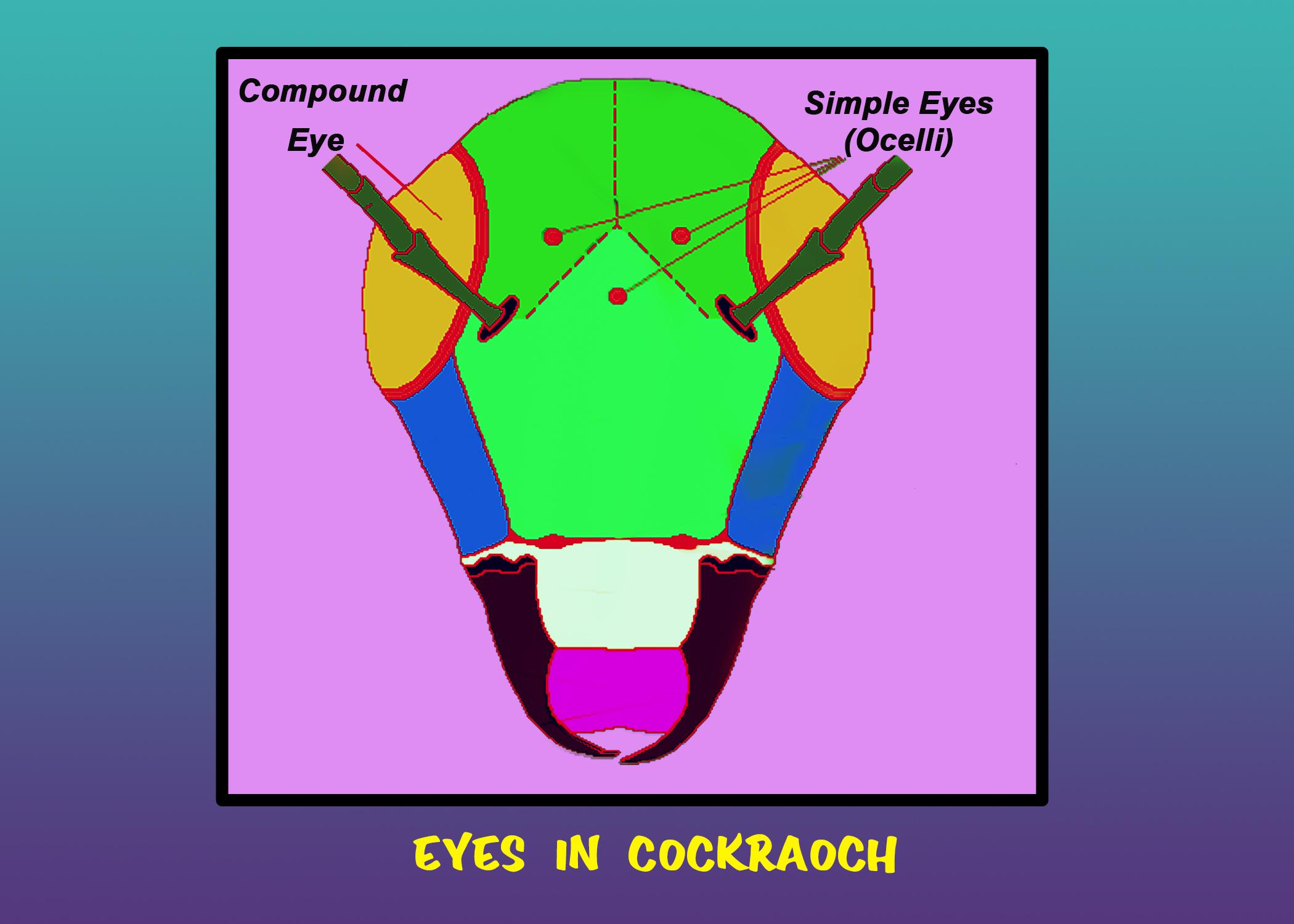
Cockroach has
(a) Two types of eyes
(b) One type of eyes
(c) Three types of eyes
(d) None of the above
Answer
561.6k+ views
Hint: Cockroach which uses its two large compound eyes to visualize the environment actually has more than one type of eye. This kind of eye arrangement is observed in other arthropods as well.
Complete step by step answer:
- Cockroaches (Periplaneta) have two types of eyes, the simple and compound eyes. They have three simple eyes known as ocelli on their forehead and two large, sessile, black, kidney-shaped structures located on the dorsolateral sides of the head capsule.
- The group of ommatidia together constitutes compound eyes. Each compound eye is covered externally by a transparent cuticle divided into hexagonal compartments called corneal facets. A single corneal facet and all components under it is known as ommatidium.
- An eye of the cockroach contains around 2000 ommatidia.

So, the correct answer is ‘Two types of eyes’.
Additional Information:
- The ommatidium is a convex shaped lens. Under the corneal facet covering, corneagen cells or lenticular cells exist which secrete the lens. A transparent crystalline cone exists below the corneagen cells which function as a second lens. Four of the vitrellae or cone cells surround it.
- The crystalline cone is secreted by vitrellae. In contact with this cone is the rhabdome which is a spindle-shaped refractive body. The rhabdome is secreted by reticular cells.
- Ommatidia are responsible for producing mosaic vision.
Note:
- Cockroaches cannot see in red light but can visualize in green light.
- All receptors except photoreceptors of the cockroach are situated in the epidermis of the integument and are modified epidermal cells called sensilla.
- Ommatidia are also present in insects, millipedes, and crustaceans.
Complete step by step answer:
- Cockroaches (Periplaneta) have two types of eyes, the simple and compound eyes. They have three simple eyes known as ocelli on their forehead and two large, sessile, black, kidney-shaped structures located on the dorsolateral sides of the head capsule.
- The group of ommatidia together constitutes compound eyes. Each compound eye is covered externally by a transparent cuticle divided into hexagonal compartments called corneal facets. A single corneal facet and all components under it is known as ommatidium.
- An eye of the cockroach contains around 2000 ommatidia.

So, the correct answer is ‘Two types of eyes’.
Additional Information:
- The ommatidium is a convex shaped lens. Under the corneal facet covering, corneagen cells or lenticular cells exist which secrete the lens. A transparent crystalline cone exists below the corneagen cells which function as a second lens. Four of the vitrellae or cone cells surround it.
- The crystalline cone is secreted by vitrellae. In contact with this cone is the rhabdome which is a spindle-shaped refractive body. The rhabdome is secreted by reticular cells.
- Ommatidia are responsible for producing mosaic vision.
Note:
- Cockroaches cannot see in red light but can visualize in green light.
- All receptors except photoreceptors of the cockroach are situated in the epidermis of the integument and are modified epidermal cells called sensilla.
- Ommatidia are also present in insects, millipedes, and crustaceans.
Recently Updated Pages
Master Class 12 Business Studies: Engaging Questions & Answers for Success

Master Class 12 Economics: Engaging Questions & Answers for Success

Master Class 12 English: Engaging Questions & Answers for Success

Master Class 12 Maths: Engaging Questions & Answers for Success

Master Class 12 Social Science: Engaging Questions & Answers for Success

Master Class 12 Chemistry: Engaging Questions & Answers for Success

Trending doubts
What is meant by exothermic and endothermic reactions class 11 chemistry CBSE

Which animal has three hearts class 11 biology CBSE

10 examples of friction in our daily life

One Metric ton is equal to kg A 10000 B 1000 C 100 class 11 physics CBSE

1 Quintal is equal to a 110 kg b 10 kg c 100kg d 1000 class 11 physics CBSE

Difference Between Prokaryotic Cells and Eukaryotic Cells




